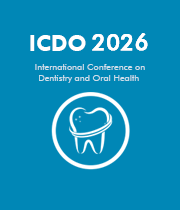Title: Enamel Matrix Derivative (EMD) Adsorption at Dental Implant-relevant Interfaces
Abstract:
Introduction:
Enamel matrix derivative (EMD), predominantly comprised of amelogenin protein, is used as a therapeutic treatment for regeneration of lost periodontal hard and soft tissues. The regenerative effects of EMD have been proven in intrabony periodontal defect therapy. However, the interaction between EMD and an implant surface and subsequent mineral is not fully known. Understanding how enamel matrix derivatives interact at interfaces in order to promote hard tissue regeneration can give us the tools to optimize their use in dental implant therapeutics.
Objective:
To study the interaction of enamel matrix derivative at the molecular level with implant-relevant interfaces.
Methods:
Quartz-crystal microbalance with dissipation (QCM-D) was used to elucidate the adsorption properties of EMD, including rate, and mass of protein layer that forms on titanium surfaces. The QCM-D measures EMD adsorption mass in real time through measuring the changes of the quartz crystal resonant frequency (coated with titanium). A series of EMD concentrations were examined in the range 0.01 to 1.0 mg/ml at 37°C and neutral pH.
Results:
The QCM-D experiments showed that the EMD adsorption mass on a titanium surface increased as the EMD concentration increased at 37°C and neutral pH (from 9 to 21 mg/m2) until the surface reached saturation at 0.1 mg/ml concentration after which further increases in concentration did not affect the bound mass. This may reflect the affinity of amelogenin to self-assemble and form nano-spheres that readily adsorb to titanium at physiological temperature and pH.
Conclusion:
The results showed that the adsorption behaviour of EMD and mass adsorbed on titanium are affected by concentration within a certain concentration range. The next stage of the project will be to examine bone cell responses to the adsorbed EMD layer in order to identify the favourable properties of EMD coating that enhance bone formation around a dental implant.




